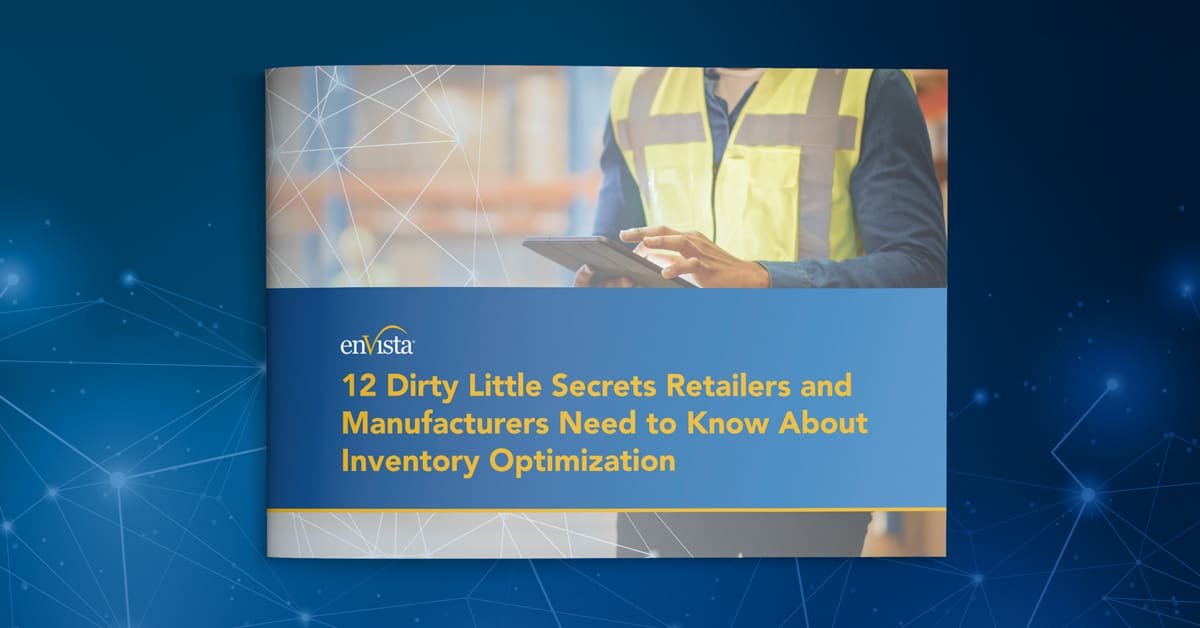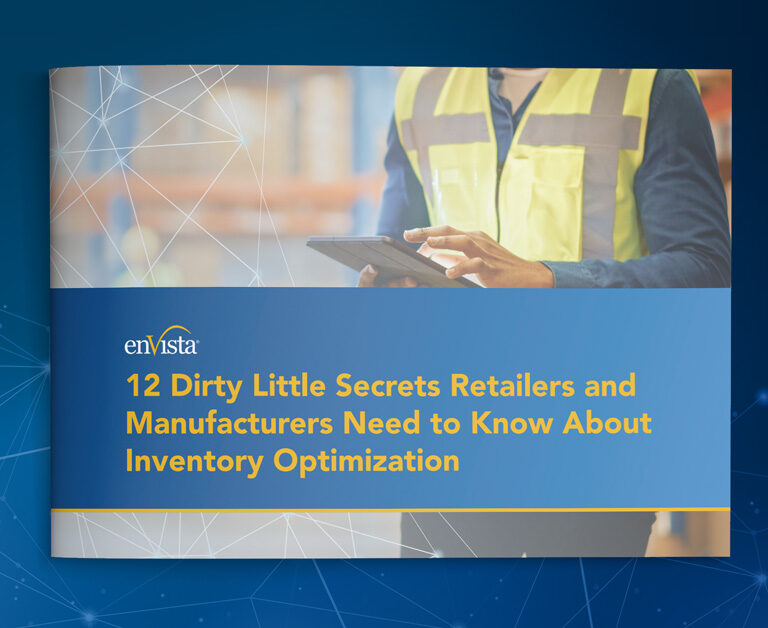National Retail Federation’s NRF 2021 Chapter 1 event was held virtually for the first time, taking place January 12-14, and January 19, 21-22, 2021. Following enVista’s CIO Fireside Chat and Witness Protection Program session on January 13, 2021, enVista’s second session took place January 14, 2021. The session, entitled “Why OMS Is the Key to Omnichannel Agility, Profitability and Transformation,” featured Jim Barnes, CEO of enVista, and Brendan Witcher, VP and Principal Analyst of Forrester.
Because COVID-19 has created a digitized, connected omnichannel world and forced consumers to become channel-agnostic, omnichannel agility is more important than ever. Consumers are being trained to expect omnichannel services everywhere, by everyone. With this in mind, it’s vital to have the proper order management system (OMS) in place to ensure a positive customer experience while remaining profitable.

12 Dirty Little Secrets Retailers and Manufacturers Need to Know About Inventory Optimization
Get the low-down on the secrets retailers and manufacturers need to know about inventory optimization.
Key Considerations for Retailers and Common Challenges
Technical challenges go beyond the obvious OMS implementation and management
- Challenge: Inventory planning systems managing cross-channel demand signals to optimize in-store inventory levels
- Challenge: Having the technology to pick, pack, store and/or ship orders from the store
A common miss that has a huge impact on costs and CX is failing to adjust inventory strategies
- Challenge: Adjusting in-store inventory/increasing safety stock to account for increases in in-store fulfillment demand
- Challenge: Inventory accuracy – ensuring that the product ordered online is actually available in-store for picking and packing
Logistical operations are often last to be fixed, but will lead to missing on customer expectations
- Challenge: Developing and implementing new processes to efficiently accept, pick and pack online orders
- Challenge: Delivering on customer service level agreements, such as time between order placement and pickup notification
The forgotten stakeholder is usually the store employee, but their buy-in is critically important
- Challenge: Managing incentives and goals to align with supporting omnichannel, such as giving credit for online orders
- Challenge: Training store staff to pick and pack online orders
Finally, how customer interaction elements align with their expectations can be hard to manage
- Challenge: Determining the right communication tools to notify customers when orders are ready (email, text, call, etc.)
- Challenge: Information presented on the website
Measuring success is a critical part of know what is working, and more importantly, what is not
- Challenge: Putting in place the right metrics for in-store fulfillment programs
While omnichannel will only continue to become more complex in the next few years, as will the various ways in which retailers fulfill orders, an OMS is vital to addressing the above challenges. A robust OMS is key to transforming to meet customer expectations and delivering customer experiences as inventory costs increase.
Actionable Takeaways for Retailers
- Don’t check the box too soon on omnichannel capabilities – “good enough” is a great way to lose customers. Fix those non-technical areas of omnichannel.
- Metrics, metrics, metrics – you cannot use multi-channel metrics to measure omnichannel success. Establish operational KPIs that ultimately impact the customer journey.
- Use omnichannel as a competitive weapon against those retailers who cannot provide such services, in particular, the pure-play online retailers.
View the full session presentation below to learn more about product forecasting, dynamic fulfillment and replenishment and how an OMS can address the challenges listed above. Check out the continued Q&A with Jim Barnes here for answers to some of the session’s questions.
Interested in learning more about enVista’s omnichannel solutions? Let’s have a conversation.™







